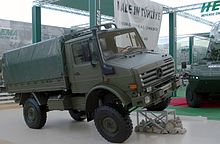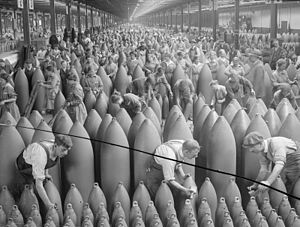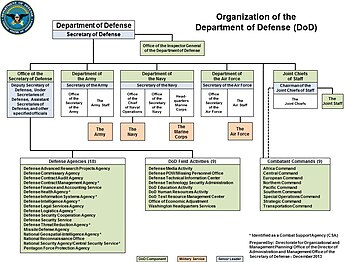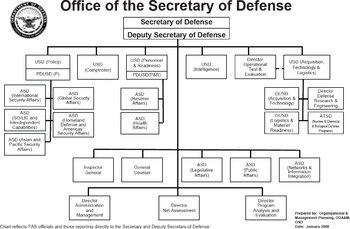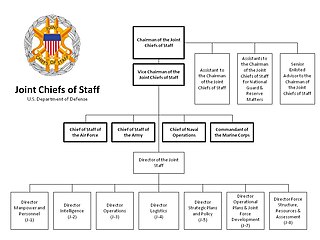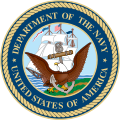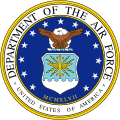Workers assemble Browning-Inglis Hi-Power pistols at the John Inglis munitions plant, Canada, April 1944
The arms industry, also known as the defense industry or the arms trade, is a global industry which manufactures and sells weapons and military technology. It consists of a commercial industry involved in the research and development, engineering, production, and servicing of military material, equipment, and facilities. Arms-producing companies, also referred to as arms dealers, defence contractors, or as the military industry, produce arms for the armed forces of states
and for civilians. Departments of government also operate in the arms
industry, buying and selling weapons, munitions and other military
items. An arsenal
is a place where arms and ammunition - whether privately or publicly
owned - are made, maintained and repaired, stored, or issued, in any
combination. Products of the arms industry include guns, artillery, ammunition, missiles, military aircraft, military vehicles, ships, electronic systems, night-vision devices, holographic weapon sights, laser rangefinders, laser sights, hand grenades, landmines and more. The arms industry also provides other logistical and operational support.
The Stockholm International Peace Research Institute (SIPRI) estimated military expenditures as of 2012 at roughly $1.8 trillion. This represented a relative decline from 1990, when military expenditures made up 4% of world GDP.
Part of the money goes to the procurement of military hardware and
services from the military industry. The combined arms-sales of the top
100 largest arms-producing companies amounted to an estimated $395
billion in 2012 according to SIPRI. In 2004 over $30 billion were spent in the international arms-trade (a figure that excludes domestic sales of arms).
According to SIPRI, the volume of international transfers of major
weapons in 2010–14 was 16 per cent higher than in 2005–2009. The five
biggest exporters in 2010–2014 were the United States, Russia, China,
Germany and France, and the five biggest importers were India, Saudi
Arabia, China, the United Arab Emirates and Pakistan.
Many industrialized countries
have a domestic arms-industry to supply their own military forces. Some
countries also have a substantial legal or illegal domestic trade in
weapons for use by their own citizens, primarily for self-defence,
hunting or sporting purposes. Illegal trade in small arms occurs in many countries and regions affected by political instability. The Small Arms Survey estimates that 875 million small arms circulate worldwide, produced by more than 1,000 companies from nearly 100 countries.
Governments award contracts to supply their country's military;
such arms contracts can become of substantial political importance. The
link between politics and the arms trade can result in the development
of what U.S. President Dwight D. Eisenhower described in 1961 as a military-industrial complex, where the armed forces, commerce, and politics become closely linked, similarly to the European multilateral defence procurement.
Various corporations, some publicly held, others private, bid for these
contracts, which are often worth many billions of dollars. Sometimes,
as with the contract for the international Joint Strike Fighter,
a competitive tendering process takes place, with the decision made on
the merits of the designs submitted by the companies involved. Other
times, no bidding or competition takes place.
Unimog truck at the International Defence Industry Fair (IDEF) in 2007
History
Painting shells in a shell filling factory during World War I.
During the early modern period,
France, United Kingdom, Netherlands and some states in Germany became
self-sufficient in arms production, with diffusion and migration of
skilled workers to more peripheral countries such as Portugal and
Russia.
The modern arms industry emerged in the second half of the
nineteenth century as a product of the creation and expansion of the
first large military-industrial
companies. As smaller countries (and even newly industrializing
countries like Russia and Japan) could no longer produce cutting-edge
military equipment with their indigenous resources and capacity, they
increasingly began to contract the manufacture of military equipment,
such as battleships, artillery pieces and rifles to foreign firms.
In 1854, the British government awarded a contract to the Elswick Ordnance Company of industrialist William Armstrong
for the supply of his latest breech loading rifled artillery pieces.
This galvanised the private sector into weapons production, with the
surplus being increasingly exported to foreign countries. Armstrong
became one of the first international arms dealers, selling his weapon
systems to governments across the world from Brazil to Japan. In 1884, he opened a shipyard at Elswick
to specialise in warship production—at the time, it was the only
factory in the world that could build a battleship and arm it
completely. The factory produced warships for many navies, including the Imperial Japanese Navy. Several Armstrong cruisers played an important role in defeating the Russian fleet at the Battle of Tsushima in 1905.
In the American Civil War in 1861 the North
had a distinct advantage over the south as it relied on using the
breech-loading rifle against the muskets of the south. This began the
transition to industrially produced mechanised weapons such as the
Gatling gun.
This industrial innovation in the defence industry was adopted by Prussia
in 1866 & 1870-71 in its defeat of Austria and France respectively.
By this time the machine gun had begun entering into the militaries.
The first example of its effectiveness was in 1899 during the Boer War and in 1905 during the Russo-Japanese War. However, Germany were leaders in innovation of weapons and used this innovation nearly defeating the allies in World War I.
In 1885, France decided to capitalize on this increasingly
lucrative form of trade and repealed its ban on weapon exports. The
regulatory framework for the period up to the First World War was characterized by a laissez-faire
policy that placed little obstruction in the way of weapons exports.
Due to the carnage of World War I, arms traders began to be regarded
with odium as "merchants of death" and were accused of having instigated
and perpetuated the war in order to maximise their profits from arms
sales. An inquiry into these allegations in Britain failed to find
evidence to support them. However, the sea change in attitude about war
more generally meant that governments began to control and regulate the
trade themselves.
Stacks of shells in the shell filling factory at Chilwell during World War I.
The volume of the arms trade greatly increased during the 20th
century, and it began to be used as a political tool, especially during
the Cold War where the United States and the USSR supplied weapons to their proxies across the world, particularly third world countries.
Sectors
Land-based weapon
This category includes everything from light arms to heavy artillery, and the majority of producers are small. Many are located in third world countries. International trade in handguns, machine guns, tanks, armored personnel carriers,
and other relatively inexpensive weapons is substantial. There is
relatively little regulation at the international level, and as a
result, many weapons fall into the hands of organized crime, rebel
forces, terrorists, or regimes under sanctions.
Small arms
The Control Arms Campaign, founded by Amnesty International, Oxfam, and the International Action Network on Small Arms,
estimated in 2003 that there are over 639 million small arms in
circulation, and that over 1,135 companies based in more than 98
different countries manufacture small arms as well as their various
components and ammunition.
Aerospace systems
A T-45 Goshawk on the assembly line at McDonnell Douglas.
Encompassing military aircraft (both land-based and naval aviation), conventional missiles, and military satellites,
this is the most technologically advanced sector of the market. It is
also the least competitive from an economic standpoint, with a handful
of companies dominating the entire market. The top clients and major
producers are virtually all located in the western world and Russia, with the United States easily in first place. Prominent aerospace firms include Rolls Royce, BAE, Dassault Aviation, Sukhoi, Mikoyan, EADS, Leonardo, Thales Group, Lockheed Martin, Northrop Grumman and Boeing. There are also several multinational consortia mostly involved in the manufacturing of fighter jets, such as the Eurofighter. The largest military contract in history, signed in October 2001, involved the development of the Joint Strike Fighter.
Some of the world's great powers maintain substantial naval forces to provide a global presence, with the largest nations possessing aircraft carriers, nuclear submarines and advanced anti-air defense systems. The vast majority of military ships are conventionally powered, but some are nuclear-powered. There is also a large global market in second-hand naval vessels, generally purchased by developing countries from Western governments.
Cybersecurity industry
The cybersecurity industry is becoming the most important defence
industry as cyber attacks are being deemed as one of the greatest risk
to defence in the next ten years as cited by the NATO review in 2013.
Therefore, high levels of investment has been placed in the
cybersecurity industry to produce new software to protect the
ever-growing transition to digitally run hardware. For the military
industry it is vital that protections are used for systems used for
reconnaissance, surveillance and intelligence gathering. However, to
protect the cyber world from attacks there are advanced cyber protection
strategies used such as content, cloud and wireless security. These can
be intertwined to form several secure layers.
Nevertheless, cyber attacks and cyber attackers have become more
advanced in their field using techniques such as Dynamic Trojan Horse
Network (DTHN) Internet Worm, Zero-Day Attack,
and Stealth Bot. As a result, the cybersecurity industry has had to
improve the defence technologies to remove any vulnerability to cyber
attacks using systems such as the Security of Information (SIM),
Next-Generation Firewalls (NGFWs) and DDoS techniques.
As the threat to computers grows, the demand for cyber protection
will rise, resulting in the growth of the cybersecurity industry. It is
expected that the industry will be dominated by the defence and
homeland security agencies that will make up 40% of the industry.
International arms transfers
According to research institute, SIPRI,
the volume of international transfers of major weapons in 2010–14 was
16 per cent higher than in 2005–2009. The five biggest exporters in
2010–14 were the United States, the United Kingdom, Russia, China and
France, and the five biggest importers were India, Saudi Arabia, China,
the United Arab Emirates (UAE) and Pakistan. The flow of arms to Africa,
the Americas, Asia and Oceania, and the Middle East increased
significantly between 2005–2009 and 2010–14, while there was a notable
decrease in the flow to Europe.
SIPRI has identified 60 countries as exporters of major weapons
in 2010–14. The top 5 exporters during the period were responsible for
almost 74 per cent of all arms exports. The composition of the five
largest exporters of arms changed between 2005–2009 and 2010–14: while
the United States and Russia remained by far the largest exporters,
China narrowly, but notably, replaced Germany as the third largest
exporter as Germany slid down to 6th place. The top 5 exported 14 per
cent more arms in 2010–14 than the top 5 in 2005–2009.
In 2010–14, 153 countries (about three-quarters of all countries)
imported major weapons. The top 5 recipients accounted for 33 per cent
of the total arms imports during the period (see table 2). India, China
and the UAE were among the top 5 importers in both 2005–2009 and
2010–14. Asia and Oceania accounted for nearly half of imports in
2010–14, followed by the Middle East, Europe, the Americas and Africa
(see figure 3). SIPRI also identified seven groups of rebel forces as
importers of major weapons in 2010–14, but none of them accounted for
more than 0.02 per cent of total deliveries.
World's largest arms exporters
Units are in Trend Indicator Values expressed as millions of U.S. dollars
at 1990s prices. These numbers may not represent real financial flows
as prices for the underlying arms can be as low as zero in the case of
military aid. The following are estimates from Stockholm International Peace Research Institute.
| 2012–2016 Rank |
Supplier | Arms Exp |
|---|---|---|
| 1 | 47,169 | |
| 2 | 33,186 | |
| 3 | 9,132 | |
| 4 | 8,564 | |
| 5 | 7,946 | |
| 6 | 6,586 | |
| 7 | 3,958 | |
| 8 | 3,823 | |
| 9 | 3,677 | |
| 10 | 3,233 |
Note that rankings for exporters below a billion dollars are less
meaningful, as they can be swayed by single contracts. A much more
accurate picture of export volume, free from yearly fluctuations, is
presented by 5-year moving averages.
Next to SIPRI there are several other sources that provide data
on international transfers of arms. These include national reports by
national governments about arms exports, the UN register on conventional
arms and an annual publication by the U.S. Congressional Research Service that includes data on arms exports to developing countries as compiled by U.S. intelligence agencies. A list of such sources can be found at the SIPRI website. Due to the different methodologies and definitions used different sources often provide significantly different data.
World’s biggest postwar arms exporter
SIPRI
uses the "trend-indicator values" (TIV). These are based on the known
unit production costs of weapons and represent the transfer of military
resources rather than the financial value of the transfer.
| 1950–2017 Rank |
Supplier | Arms Exp (in billion TIV) |
|---|---|---|
| 1 | 673,010 | |
| 2 | 588,150 | |
| 3 | 140,380 | |
| 4 | 120,700 | |
| 5 | 85,980 | |
| 6 | 53,090 | |
| 7 | 32,270 | |
| 8 | 31,250 | |
| 9 | 24,010 | |
| 10 | 16,790 |
World's largest arms importers
Units are in Trend Indicator Values expressed as millions of U.S. dollars
at 1990s prices. These numbers may not represent real financial flows
as prices for the underlying arms can be as low as zero in the case of
military aid.
| 2012–2016 rank |
Recipient | Arms imp |
|---|---|---|
| 1 | 18,239 | |
| 2 | 11,689 | |
| 3 | 6,593 | |
| 4 | 6,381 | |
| 5 | 5,636 | |
| 5 | 5,312 | |
| 7 | 4,721 | |
| 8 | 4,598 | |
| 9 | 4,494 | |
| 10 | 4,273 |
Note that arms import rankings fluctuate heavily as countries
enter and exit wars. Export data tend to be less volatile as exporters
tend to be more technologically advanced and have stable production
flows. 5-year moving averages present a much more accurate picture of
import volume, free from yearly fluctuations.
List of major weapon manufacturers
Share of arms sales by country. Source is provided by SIPRI.
This is a list of the world's largest arms manufacturers and other military service companies who profit the most from the War economy, their origin is shown as well. The information is based on a list published by the Stockholm International Peace Research Institute for 2015. The list provided by the SIPRI excludes companies based in China.
| Rank | Company | Country | Arms sales (US$ m.) | Total sales (US$ m.) | Arms sales as a % of total sales | Total profit (US$ m.) | Total employment |
|---|---|---|---|---|---|---|---|
| 1 | Lockheed Martin | 36,440 | 46,132 | 79 | 3,605 | 126,000 | |
| 2 | Boeing | 27,960 | 96,114 | 29 | 5,176 | 161,400 | |
| 3 | BAE Systems | 25,510 | 27,355 | 93 | 1,456 | 82,500 | |
| 4 | Raytheon | 21,780 | 23,247 | 94 | 2,067 | 61,000 | |
| 5 | Northrop Grumman | 20,060 | 23,256 | 86 | 1,990 | 65,000 | |
| 6 | General Dynamics | 19,240 | 31,469 | 61 | 2,965 | 99,900 | |
| 7 | Airbus | 12,860 | 71,476 | 18 | 2,992 | 136,570 | |
| 8 | United Technologies Corporation | 9,500 | 61,047 | 16 | 4,356 | 197,200 | |
| 9 | Leonardo S.p.A. | 9,300 | 14,412 | 65 | 584 | 47,160 | |
| 10 | L3 Technologies | 8,770 | 10,466 | 84 | 282 | 38,000 |
Arms control
Arms control refers to international restrictions upon the
development, production, stockpiling, proliferation and usage of small
arms, conventional weapons, and weapons of mass destruction. It is typically exercised through the use of diplomacy, which seeks to persuade governments to accept such limitations through agreements and treaties, although it may also be forced upon non-consenting governments.
Notable international arms control treaties
Global weapons sales from 1950-2006
- Geneva Protocol on chemical and biological weapons, 1925
- Outer Space Treaty, signed and entered into force 1967
- Biological Weapons Convention, signed 1972, entered into force 1975
- Missile Technology Control Regime (MTCR), 1987
- Chemical Weapons Convention, signed 1993, entered into force 1997
- Ottawa Treaty on anti-personnel land mines, signed 1997, entered into force 1999
- New START Treaty, signed by Russia and the United States in April 2010, entered into force in February 2011
- Arms Trade Treaty, concluded in 2013, entered into force on 24 December 2014.

